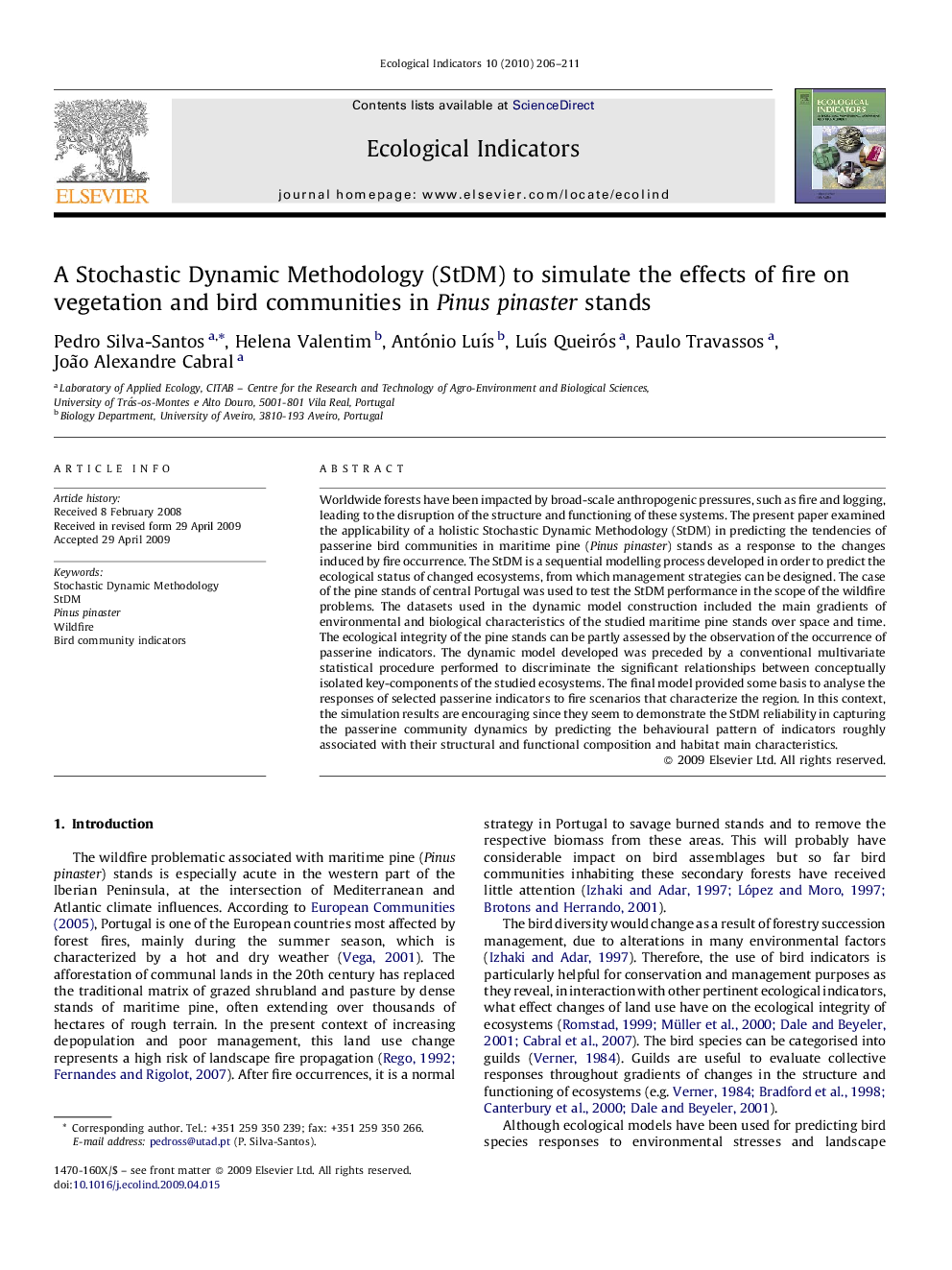| Article ID | Journal | Published Year | Pages | File Type |
|---|---|---|---|---|
| 4374274 | Ecological Indicators | 2010 | 6 Pages |
Worldwide forests have been impacted by broad-scale anthropogenic pressures, such as fire and logging, leading to the disruption of the structure and functioning of these systems. The present paper examined the applicability of a holistic Stochastic Dynamic Methodology (StDM) in predicting the tendencies of passerine bird communities in maritime pine (Pinus pinaster) stands as a response to the changes induced by fire occurrence. The StDM is a sequential modelling process developed in order to predict the ecological status of changed ecosystems, from which management strategies can be designed. The case of the pine stands of central Portugal was used to test the StDM performance in the scope of the wildfire problems. The datasets used in the dynamic model construction included the main gradients of environmental and biological characteristics of the studied maritime pine stands over space and time. The ecological integrity of the pine stands can be partly assessed by the observation of the occurrence of passerine indicators. The dynamic model developed was preceded by a conventional multivariate statistical procedure performed to discriminate the significant relationships between conceptually isolated key-components of the studied ecosystems. The final model provided some basis to analyse the responses of selected passerine indicators to fire scenarios that characterize the region. In this context, the simulation results are encouraging since they seem to demonstrate the StDM reliability in capturing the passerine community dynamics by predicting the behavioural pattern of indicators roughly associated with their structural and functional composition and habitat main characteristics.
